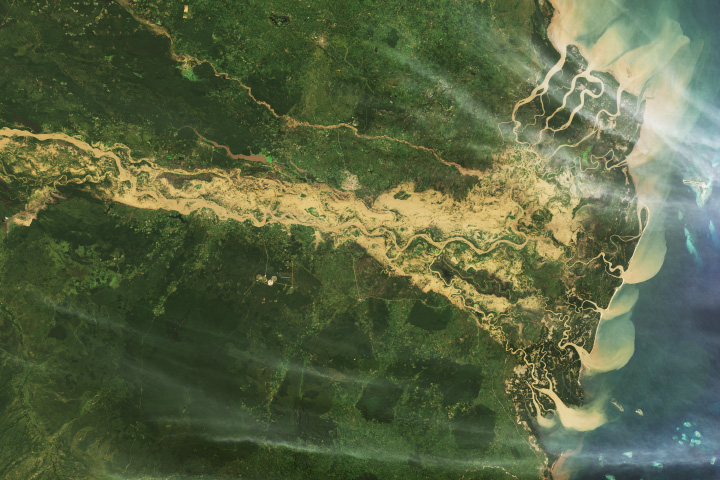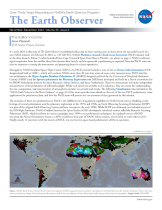- Home
- Missions
- Data
- Communications
- People
- The Earth Observer Newsletter




Recent Imagery
You will be directed to the NASA Visible Earth webpage when you select Images by Mission below, or click on the images at right that are randomly generated to represent four out of all possible topics.
The Earth Observer: Mar - Apr, 1993
In This Issue
Click title below to view page
PENDING: Needs to be manually entered; encountered problem when copying/pasting from scanned original.
Editor's Corner
Michael King, EOS Senior Project Scientist
The EOS Investigators Working Group meeting was held on March 29-31 in Greenbelt, Maryland, followed by a half-day preliminary Payload Advisory Panel meeting. The primary focus of the IWG was to agree on the definition of at-launch data products for each EOS instrument (see IWG report elsewhere in this issue). Since the IWG, I have been working with a small team of support contractors and EOSDIS personnel to synthesize the desired data products list for each instrument and the recommended high-priority products from the Atmosphere, Ocean, Land-Biosphere, and Solid Earth Panels. The outgrowth of this process is a data product list that is larger than that proposed at the outset of the IWG. As a consequence, I am in the process of evaluating the prioritization within each instrument team, and of separately identifying data products and parameters. This differentiation recognizes the clear distinction made by Science Teams with heritage in producing data products, such as the Geophysical Data Record recommended by the NSCAT and SSALT/DORIS/TMR teams.
By early June, Ghassem Asrar and I will forward a letter to each Team Leader or Principal Investigator that contains the complete list of at-launch parameters proposed by each Science Team and endorsed by the various Panels, together with a detailed breakdown of products with their corresponding parameters for that Team. At that time we will request confirmation of this prioritization, as well as validation of some of the information we are assuming for these parameters, such as storage volume, floating point operations per second, accuracy, etc. This information will be used to allow EOSDIS and the EOSDIS Core System (ECS) contractor (Hughes Applied Information Systems) to design and support this system. The ECS contract was signed on March 30.
Last issue, I reported the appointment of key scientists within the Earth Sciences Directorate as Project Scientists of individual EOS spacecraft missions. I am happy to report that Dr. Claire Parkinson has agreed to be the EOS PM Project Scientist, replacing Les Thompson, who is moving to a new role as EOS Instrument Scientist. This move recognizes Thompson's strong
Read more...

